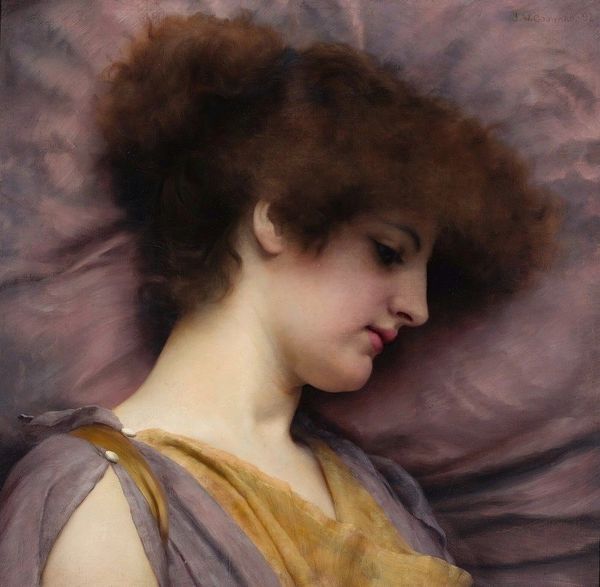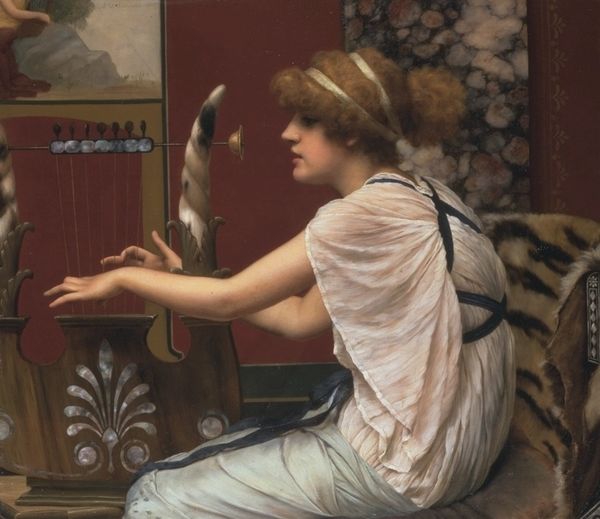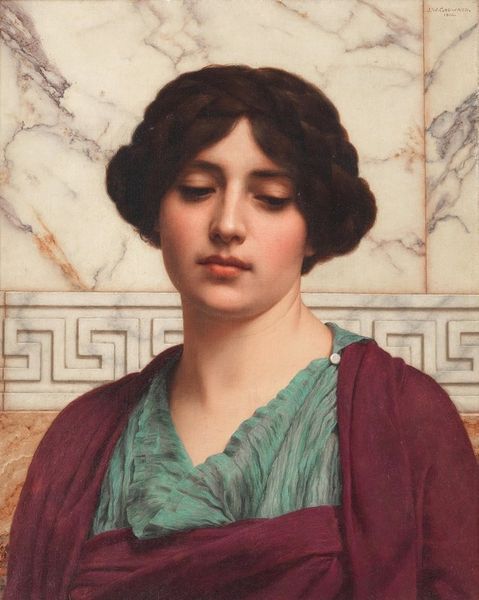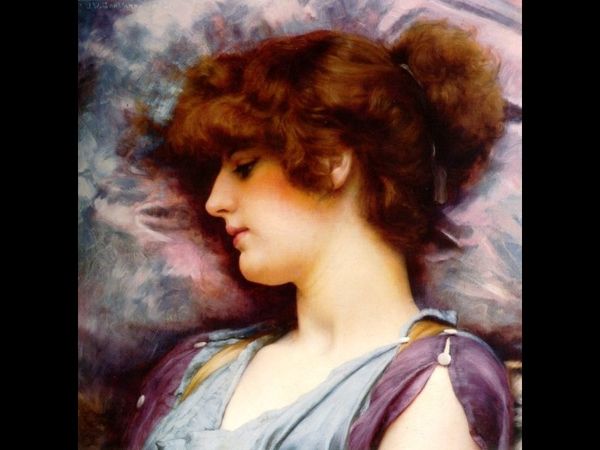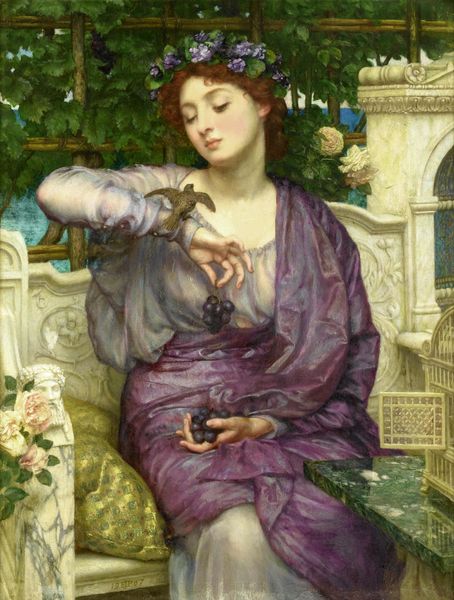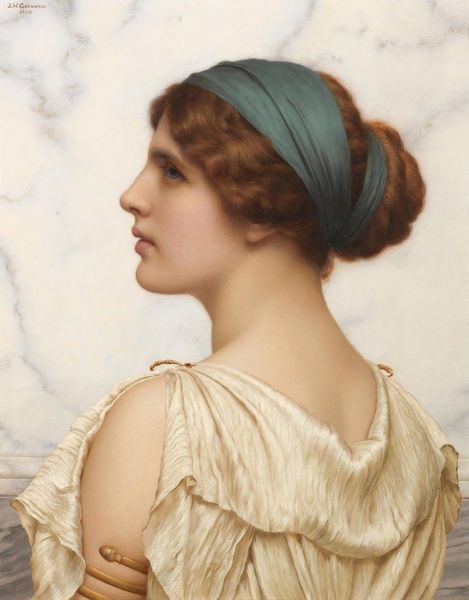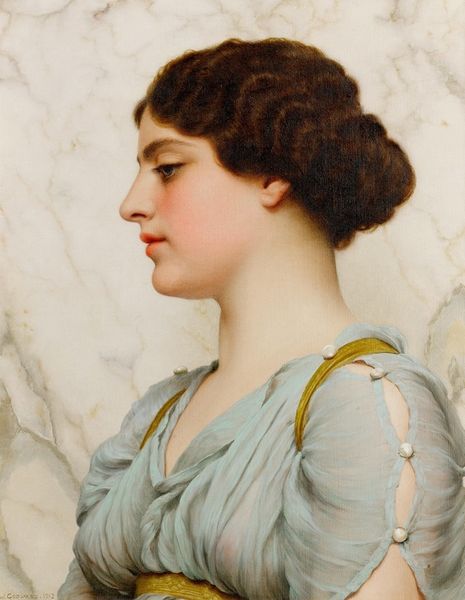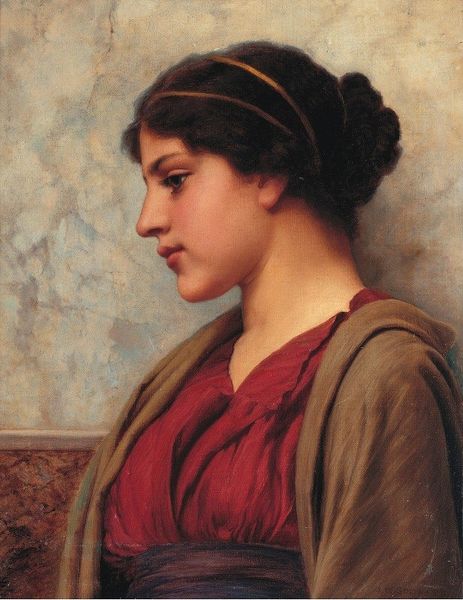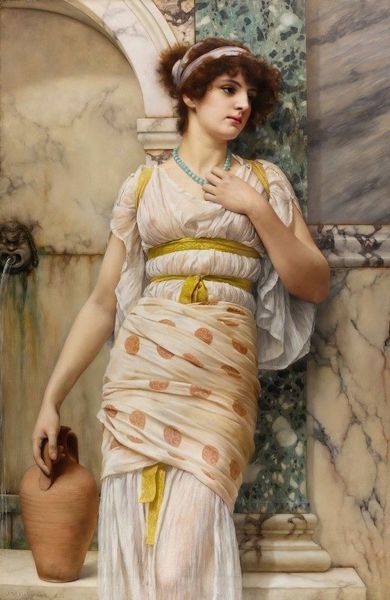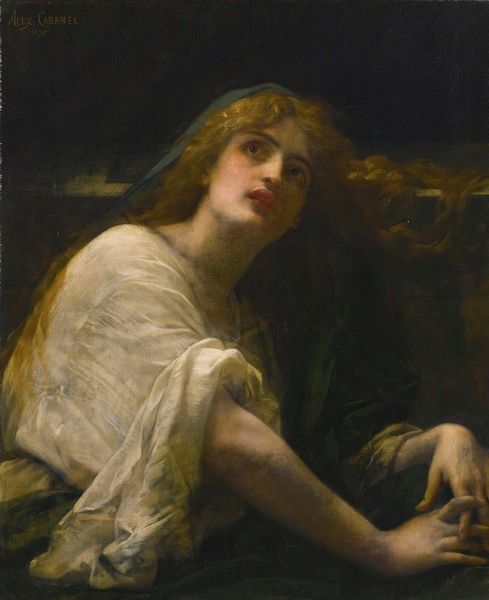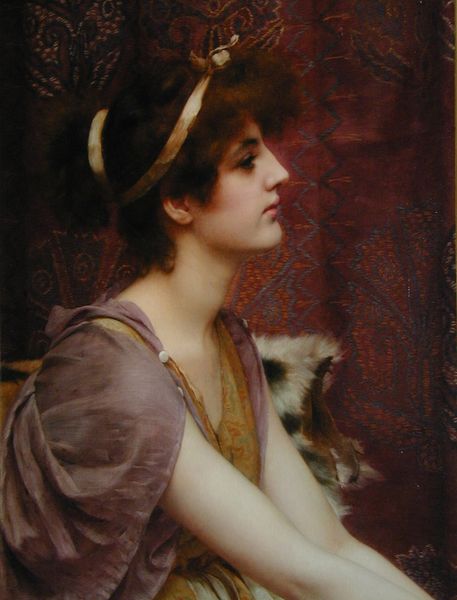
Copyright: Public Domain: Artvee
Curator: I’m immediately drawn in by the subdued sadness that seems to emanate from this canvas. The woman's downcast gaze and the muted colors contribute to a palpable sense of melancholy. Editor: Let’s delve deeper into John William Godward’s “Briseis,” crafted in 1896 using oil paint. What we see here is part of Godward's fascination with classical antiquity, though tinged with late-Victorian sensibilities. He was very involved with academic art and part of the Pre-Raphaelite movement as well. Curator: I see echoes of that Pre-Raphaelite obsession with beauty, but look closely – it’s beauty tinged with weariness. Her pose, draped across what looks like a tiger skin, communicates a heavy lethargy. What could Briseis represent here symbolically? Is she an emblem of lost power, of captivity? Editor: Briseis, in Homer’s “Iliad,” was a captive prize, taken from Achilles. Godward certainly understood how to source and render luxury, but also the ways in which materials and setting could contribute to the figure's mood and the narratives they could convey. Look at the choice of texture. The contrast between the smooth drapery and the fur is deliberate. Curator: Absolutely. I find myself drawn to the very drape of her lilac gown, a color historically associated with mourning. The folds cascade, suggesting both opulence and perhaps a kind of resignation, hinting at deeper narratives of women's status in his time period and the ones being rendered here in paint. The gold clasp holding her tunic, that detail has significance too I believe. It seems less functional than decorative. A small emblem of her possibly purchased status. Editor: Well put. And the rendering itself is incredibly smooth. You can almost feel the weight of the cloth, a product of his skilled use of oil paints. He also used many techniques for light and shadow, all working in conjunction with what he wants the viewer to feel from this painting. It is less about pure documentation, but is, instead, his artistic intent and process to be highlighted. Curator: This painting truly exists as a kind of visual poem on the burden of beauty and the complexities of captivity, resonating long after the first glance. Godward delivers a haunting tableau of historical womanhood in context. Editor: It invites contemplation of how artists interpret history, material, and gender, leaving us to consider the layers of meaning embedded within its creation.
Comments
No comments
Be the first to comment and join the conversation on the ultimate creative platform.
